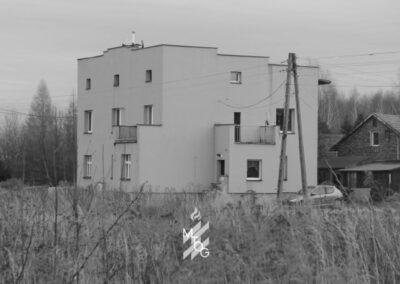Auschwitz Sub Camps
Holocaust Research & Education FoundationWe have been researching the Auschwitz sub-camp system and their physical contemporary locations for over a decade.
Not all documents survived the war so finding many of the locations has taken several years. In some cases, towns have independently marked the existence of the sub-camp with a small plaque on a building, or in the town. However, the area of commemoration does not always represent the correct location of the camp. Therefore, where records do not exist, we have worked with the local communities, local museums, independent historians and used the testimonies from the Auschwitz archives to present the most accurate geographical locations of the sub-camp system to date. We are using contemporary pictures to show how these sites look today, a symbolic action to represent an incredibly important part of the history of Auschwitz and how these sites have largely been forgotten.
About the Auschwitz Sub-Camps
Auschwitz expanded as a result of economic decisions that changed how the camp complex would operate. SS-Reichsführer Heinrich Himmler ordered the creation of agricultural and industrial plants in the vicinity of the camps towns and villages, thus meaning Auschwitz would have to be extended to accommodate the immediate increase of prisoners.
Small networks of branches under the Auschwitz Administration were soon built that became known as sub-camps. The first such places were within the interest zone of Auschwitz in villages such as Babice, Brzezinka, Budy, Harmęże, Pławy and Rajsko. Some camps such as Pławy, Brzezinka and Harmęże were within walking distance from Birkenau. Budy and Rajsko were a few kilometres further away.
Nevertheless, it was decided over time to ‘house’ prisoners at their place of work. One reason for this was the fatigued state of the prisoners on arrival at work who had to march up to 15km in all weathers wearing just wooden clogs and thin striped uniforms. Commandants of the sub-camps were put in place, however they still fell under the administration of Auschwitz.
In the Polish village of Monowice, the camp known as Auschwitz III Monowitz was established. This became known as the largest sub-camp of Auschwitz and went on to house over 10,000 prisoners. In 1943, there was a change of administration. The camp of Auschwitz
maintained control of the agricultural sub-camps whilst the administration of Monowitz (Auschwitz III) managed the industrial plants in the Upper Silesia areas.
In 1944, it is estimated that over 41,500 prisoners worked in the sub-camp system in over 45 locations.
Althammer
Location Today: Poland
Camps existence:
September 1944 – January 1945
Population: Around 500
Babitz
Location Today: Poland
Camps existence:
March 1943 to January 17th 1945
Population: Around 340
(Wirtschaftshof) Birkenau
Location Today: Poland
Camps existence:
1943 to January 1945
Population: 204
Bismarckhütte
Location Today: Poland
Camps existence:
September 1944 – 18th January 1945
Population: Around 200
Blechhammer
Location Today: Poland
Camps existence:
1st April 1944 – 21st January 1945
Population: 4115










